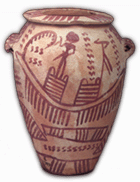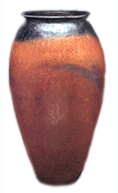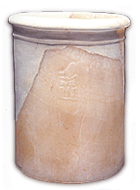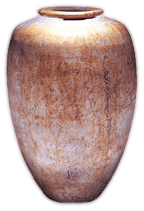
|
|
|
|
|
| |
Gallery
Tour
ORIGINS The University of Pennsylvania Museum (UPM) has the most extensive and varied collection in the United States of material from Predynastic and Early Dynastic Egypt (ca. 4000-2800 B.C.), the formative phases of Egyptian civlization and the periods during which the distinctive characteristics of Egyptian society took shape. Predynastic Pottery Other pots common during the mid-Naqada II Period (3550-3400 B.C.) were made from marl clay and decorated with red painted designs, often called "Decorated Ware." On the earliest decorated vessels, these designs were merely geometric patterns, but soon more elaborate images appeared. Usually showing scenes of desert or river life, these decorations sometimes have a narrative aspect, and may be connected to the origins of writing in ancient Egypt. Predynastic Burial Shortly before 3000 B.C., the Predynastic Kingdoms of Egypt were united under a single ruler. Already by this time, many of the iconographic and symbolic representations associated with Egyptian divine kingship had been established. One of the earliest rulers of a unified Egypt was King Narmer (3000 B.C.), the same ruler commemorated on the famous "Narmer Palette" now in the Cairo Museum. The Museum's calcite "Narmer vase" is decorated with the name of the king inside a rectangular box called a serekh, which represents the niched architecture found on royal buildings at this time. The falcon god Horus, who was already identified with the reigning king at this early date, is perched atop this serekh. This vase was excavated in a tomb at Abydos, which has been identified as belonging to King Aha, the successor of Narmer. Another of the UPM's early royal monuments is a massive calcite vase inscribed with the name of King Khasekhem, the last ruler of Dynasty 2 (2800-2675 B.C.). It was found at the site of Hierokonpolis by Flinders Petrie in 1898. The inscription consists of three main parts. In the center is the vulture goddess Nekhbet, who is shown holding a ring encircling the word for "rebels." To the right are the hieroglyphs meaning "year of fighting and smiting northerners," suggesting that the vessel commemorates an historical events. This vase was probably part of a royal donation made to the temple. |
|
[top] |
|
|
|
|
|
|
Egypt
Home |
Expeditions Past and Present | Gallery
Tour | Gods and Goddesses |



